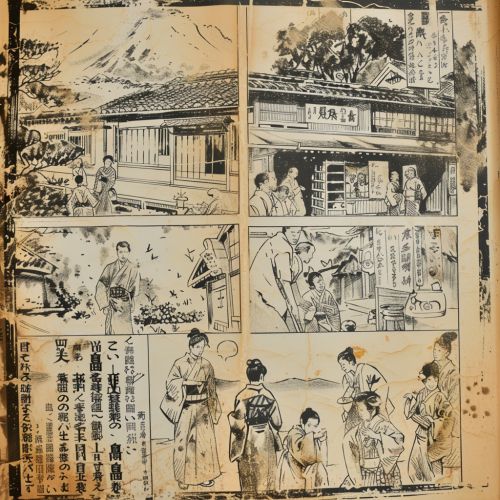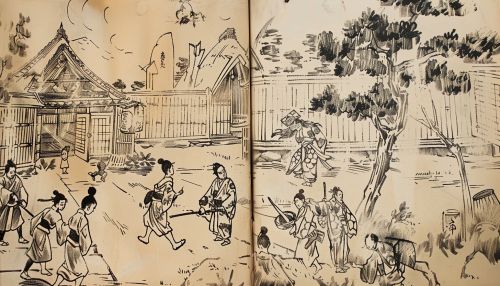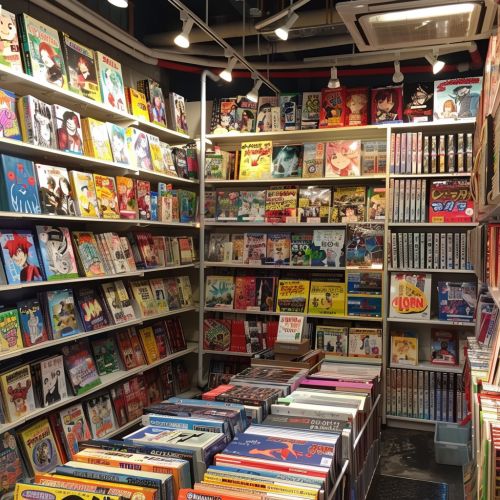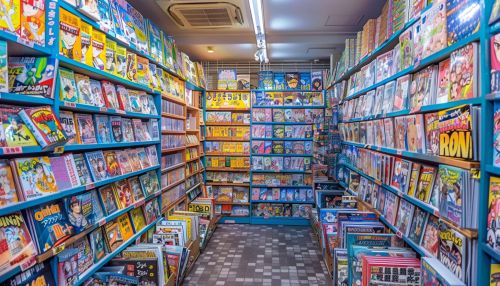Manga
Origins and History
Manga, a term used outside Japan to refer to comics originally published in Japan, has a rich history that dates back to the 12th century. The term "manga" itself was first used by the renowned ukiyo-e artist, Hokusai, in the 19th century. However, the art form has evolved significantly since its inception, with influences ranging from traditional Japanese art to Western comic strips.


The earliest examples of manga can be traced back to the "choju-giga" scrolls of the 12th and 13th centuries. These scrolls, attributed to the artist Toba Sōjō, depicted animals in anthropomorphic settings and are considered the precursors to modern manga.
During the Edo period (1603-1867), a form of picture book known as "kibyoshi" became popular. These books, which featured illustrations accompanied by text, are seen as another early form of manga.
The modern form of manga emerged after World War II, influenced by the American comic strips brought over by the GIs. Artists like Tezuka Osamu, known as the "God of Manga", played a significant role in shaping this new form of manga. His work, such as "Astro Boy" and "Kimba the White Lion", set the standard for storytelling and artistry in manga.
Styles and Genres
Manga encompasses a wide range of genres, each catering to different age groups and demographics. The main genres include "shonen" (for boys), "shojo" (for girls), "seinen" (for adult men), and "josei" (for adult women). Each genre has its own distinct style and themes.
"Shōnen" manga, aimed at young boys, often features action-packed stories with themes of friendship, struggle, and victory. Popular shōnen manga include "Naruto", "One Piece", and "Dragon Ball".
"Shōjo" manga, targeted at young girls, typically revolves around relationships and romance, often set in fantastical or school settings. Famous shōjo manga include "Sailor Moon", "Fruits Basket", and "Cardcaptor Sakura".
"Seinen" and "Josei" manga are aimed at adult men and women respectively. These genres often explore complex themes and narratives, with a focus on realism and emotional depth.
Cultural Impact
Manga has had a significant impact on Japanese culture and society. It has become an integral part of Japan's publishing industry, with millions of copies sold every year. Manga also influences other forms of media, such as anime and video games, and has contributed to the global popularity of Japanese pop culture.


Internationally, manga has gained a substantial following, with translated works available in many languages. The global spread of manga has led to the creation of manga-style comics in other countries, a phenomenon known as "global manga".
Manga also plays a role in societal discourse, with some works addressing issues such as gender roles, sexuality, and social inequality.
Production and Publication
Manga production involves several stages, from initial concept to final publication. The process typically begins with the creation of a rough draft or "name", which outlines the story and sketches the panels. This is followed by the final artwork, which is often done in ink.
Manga artists, or "mangaka", often work with assistants who help with tasks such as inking, shading, and lettering. The work is then published, either in manga magazines or as standalone volumes.
Manga magazines, such as "Shonen Jump" or "Shojo Beat", are a common way for new manga to be introduced to the public. These magazines, which are often hundreds of pages long, contain serialized installments of many different manga series.
